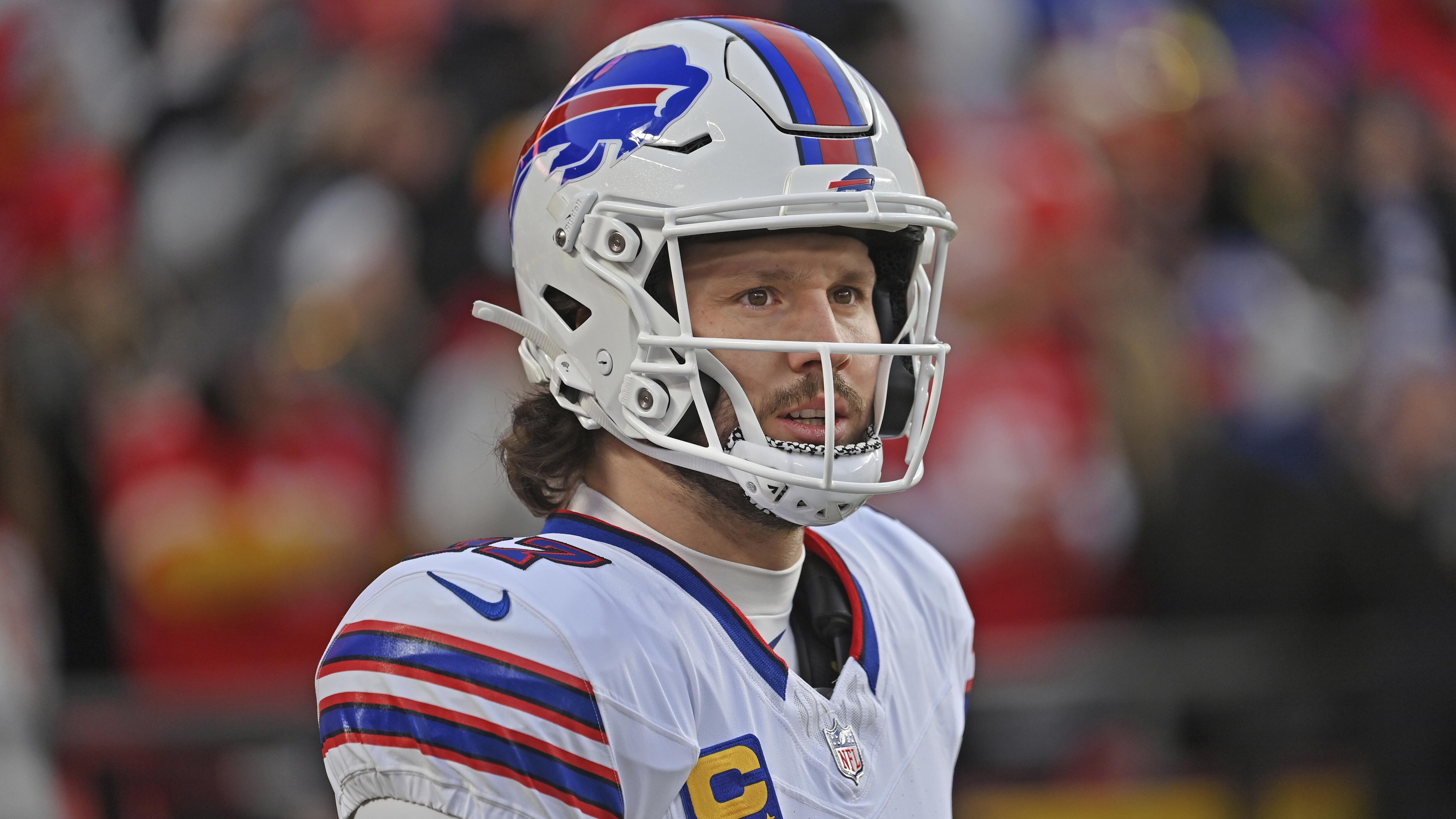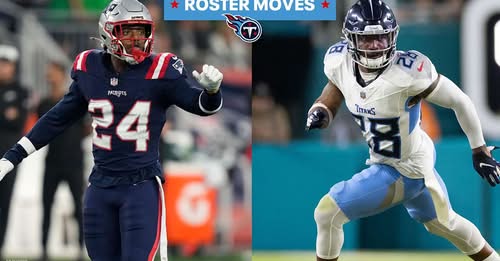2025 Fantasy Football Outlook: Colts Present Clear Overvalued Risks, Undervalued Gems, and Deep Sleeper Potential as Draft Season Heats Up
As fantasy football managers prepare for the 2025 season, the Indianapolis Colts present one of the most intriguing and polarizing rosters to evaluate. From breakout stars to uncertain depth chart battles, the Colts’ fantasy outlook demands closer inspection—especially with draft season peaking in August. Identifying overvalued players, pinpointing undervalued assets, and spotting that one deep sleeper who could tilt a fantasy league are all critical parts of a winning strategy. And in Indianapolis, there’s plenty to dissect. With Anthony Richardson entering his second full season as a starting quarterback, Jonathan Taylor fully healthy and removed from last year’s injury-related setbacks, and a talented group of young pass catchers vying for target share, the Colts are a fertile ground for fantasy opportunity—but also a trap for those who don’t look beneath the surface numbers.
Let’s begin with the biggest overvaluation currently happening in fantasy circles: Jonathan Taylor. While Taylor is undoubtedly a talented and productive back when healthy, his average draft position in 2025 mocks has climbed into the late first or early second round in most PPR formats. That’s rich, considering the evolving offensive scheme under Shane Steichen that is expected to feature more quarterback-designed runs, especially in red-zone packages. Anthony Richardson’s elite athleticism and goal-line usage significantly cap Taylor’s touchdown ceiling. Last season, Richardson led all quarterbacks in red-zone rush attempts per game before his injury, and that trend is expected to resume in 2025 with a fully operational playbook. Fantasy managers expecting a return to Taylor’s 2021 workload might be disappointed, especially in an offense that appears committed to balancing out the rushing load. While Taylor remains a safe floor player with high-yardage potential, the days of automatic top-five running back production may be behind him in this version of the Colts offense. The price point, when compared to the projected usage, makes him a potential bust if he doesn’t reclaim his goal-line monopoly.
Another name carrying more fantasy weight than warranted is rookie wide receiver Adonai Mitchell, who has flashed in camp and garnered early buzz. While the former Texas standout brings undeniable talent and vertical ability to the Colts’ passing attack, the target competition and offensive design suggest a more modest rookie season. Mitchell’s ADP has risen steadily through July due to beat reporter hype and highlight-reel plays in joint practices, but he’s currently being drafted ahead of more established WR3s and breakout veterans in more stable situations. The Colts’ passing volume isn’t projected to be in the top half of the league, and Mitchell will need to outperform not just expectations but also teammates like Michael Pittman Jr. and Josh Downs for consistent weekly relevance. That’s a tall order for a rookie in a run-centric offense still finding its identity. Mitchell’s skillset makes him worth watching, but drafting him in the top-40 among wide receivers could result in fantasy frustration, especially if he starts slow or rotates heavily with Alec Pierce and other situational players.
If there’s one Colts player being wildly undervalued across all formats, it’s Josh Downs. Entering his second season, Downs quietly posted one of the best rookie slot campaigns in recent team history, becoming a reliable target in the short-to-intermediate passing game. He excelled in getting separation against zone coverage, an area where Anthony Richardson still needs reliable safety valves as he develops as a passer. Despite finishing with over 600 receiving yards last year, Downs is being drafted outside the top 60 wide receivers in many leagues—an oversight that could become a major edge for savvy managers. His route-running precision, chemistry with Richardson, and inside-outside versatility give him real upside in PPR formats, particularly in games where the Colts are trailing and forced into pass-heavy scripts. Unlike Mitchell, Downs already has the trust of the quarterback and coaching staff, and he’s shown he can handle a high volume of targets without needing big-play heroics. He’s unlikely to command red-zone attention, but his floor is one of the safest on the roster for the price fantasy managers are currently paying.
Turning to the quarterback position, Anthony Richardson may be the most polarizing fantasy asset on the Colts and one of the biggest X-factors league-wide. After an injury-shortened rookie campaign that flashed elite upside, Richardson is being drafted as a fringe QB1, often in the QB8 to QB12 range. That could prove to be a discount for what he’s capable of. In just four starts in 2024, he posted multiple top-five fantasy finishes, and his rushing floor is already among the best in the league at the position. This season, with a full offseason of work, improved offensive line continuity, and a deeper understanding of Steichen’s scheme, Richardson is primed to take a leap both in real-life quarterbacking and fantasy point production. He’s unlikely to be among the league leaders in passing yardage or completion percentage, but his red-zone rushing usage and explosive play potential make him a league-winner candidate in the right format. Concerns around injury risk are valid, but those risks are already baked into his ADP, and the upside far outweighs the cost. In formats that reward rushing production or allow six-point passing touchdowns, Richardson could easily finish as a top-five fantasy quarterback if he plays 15 or more games.
One of the deeper names worth monitoring is rookie tight end AJ Barner. With Jelani Woods struggling to stay healthy and Mo Alie-Cox relegated to a more blocking-heavy role, Barner has emerged as a camp standout, impressing coaches with his ability to absorb the playbook and contribute both as a blocker and pass catcher. While it’s rare for rookie tight ends to make a significant fantasy impact, Barner’s path to playing time is clearer than most. The Colts often run two- and three-tight-end sets, and if Barner can seize the TE1 role by midseason, he could be a late-season waiver wire darling. Currently undrafted in most formats, he offers a true deep sleeper profile—especially in dynasty or TE-premium leagues. Keep an eye on preseason usage; if Barner is getting first-team reps and red-zone snaps, he’s worth a late dart throw.
Michael Pittman Jr., the team’s top receiver and Richardson’s go-to in key situations, sits in an interesting middle ground in fantasy value—neither clearly overvalued nor flying under the radar. His volume metrics remain elite, and he finished last season with over 90 receptions despite quarterback turmoil. With Richardson at the helm for a full season, Pittman’s target quality may actually decrease in some ways, especially on timing routes and sideline throws. However, his size, toughness, and ability to operate in contested catch situations keep him relevant as a WR2 in most formats. What limits his upside is the Colts’ low pass volume and Richardson’s tendency to tuck and run instead of checking down. Pittman’s floor is solid, but he may lack the ceiling of similarly priced receivers in more pass-heavy systems. Still, for managers looking for consistency and high snap share, he remains a reliable mid-round pick with weekly starter appeal.
From a broader fantasy perspective, the Colts represent the kind of team that can either break fantasy leagues with unexpected production or frustrate managers with inconsistent usage and scheme quirks. Shane Steichen’s offense is still evolving, and much depends on Richardson’s development as a passer. If he can take even a moderate step forward in accuracy and decision-making, players like Pittman, Downs, and perhaps even Mitchell could all exceed expectations. If he struggles or the offensive line regresses, however, it’s likely that Jonathan Taylor will shoulder a heavier load, and fantasy volatility across the roster will increase. This creates opportunity for value if fantasy drafters are willing to tolerate risk and build rosters that can absorb occasional low-output games.
Defensively, the Colts may also offer occasional streaming value, particularly in favorable matchups. Their pass rush, led by DeForest Buckner and Kwity Paye, is capable of producing sacks and turnovers against weaker offensive lines. While they won’t be a plug-and-play every-week defense, they should be considered in matchups against teams with turnover-prone quarterbacks or struggling protection schemes. In best-ball formats, their boom-or-bust nature might even deliver a couple of double-digit performances that swing a matchup.
Special teams should not be overlooked either, as kicker Matt Gay remains one of the most accurate in the league and could have sneaky fantasy value in games where the Colts stall in the red zone. His leg strength and consistency from distance make him a viable kicker in all formats, and his current ADP sits well below his production level from last year.
As always, context matters when evaluating fantasy football players. The Colts may not be a consensus offensive juggernaut, but they offer value in the margins, potential breakout stars, and the kind of depth chart volatility that creates opportunities for those willing to take calculated risks. Whether you’re targeting upside quarterbacks, late-round PPR receivers, or stash-and-hope tight ends, Indianapolis has something for every fantasy manager in 2025. The key will be to avoid the hype traps, embrace the undervalued pieces, and keep a close eye on preseason usage and injury updates. The Colts may not win every Sunday, but in fantasy terms, they could help you win your league.



